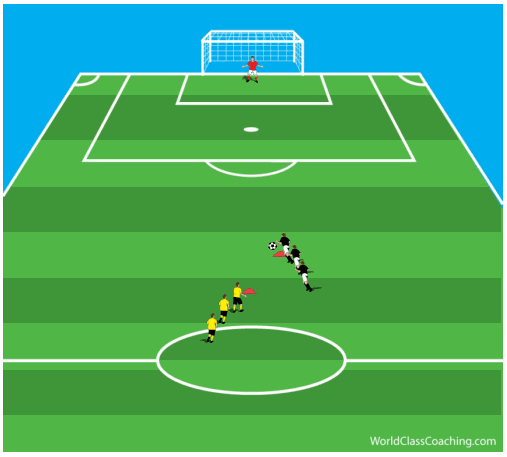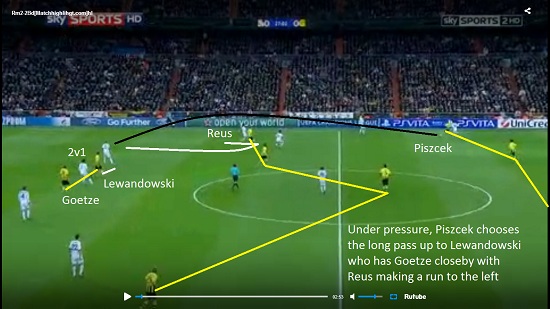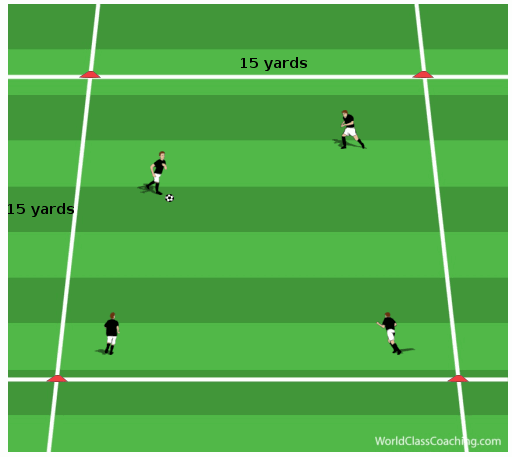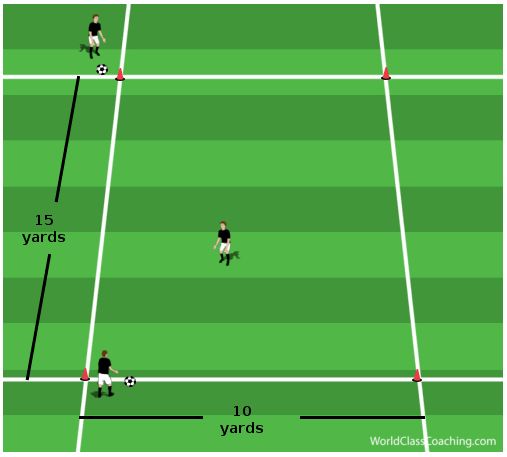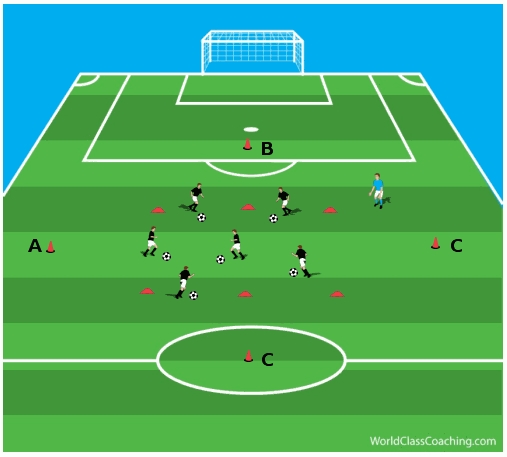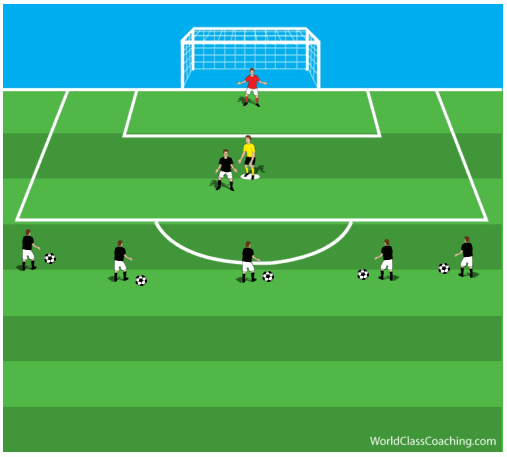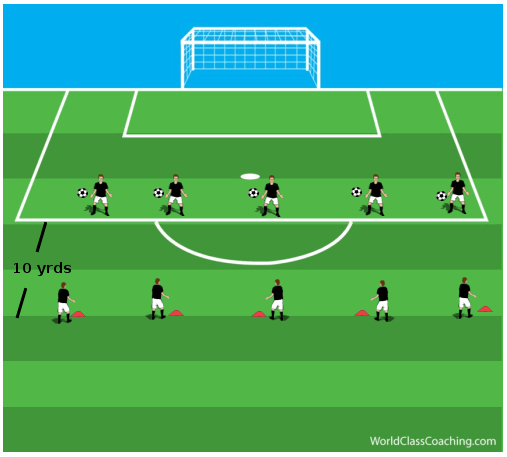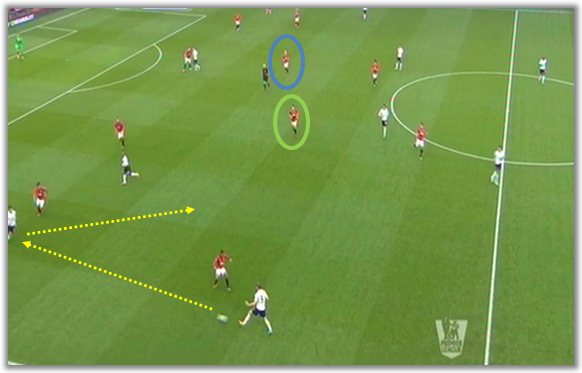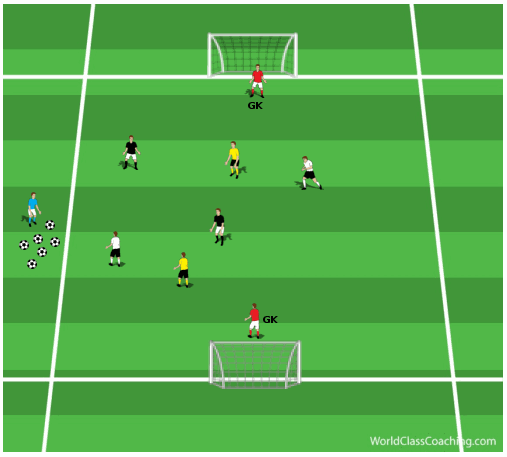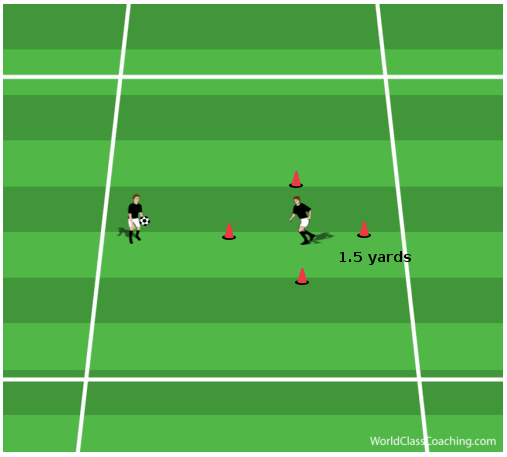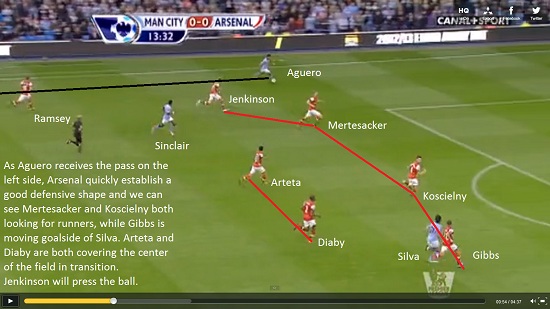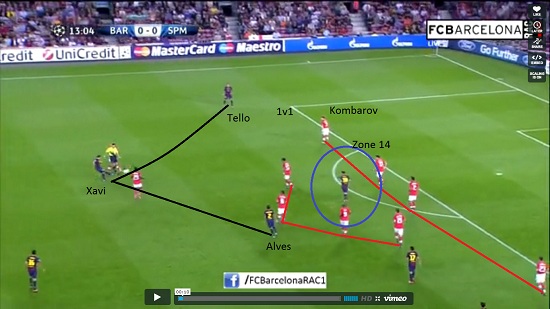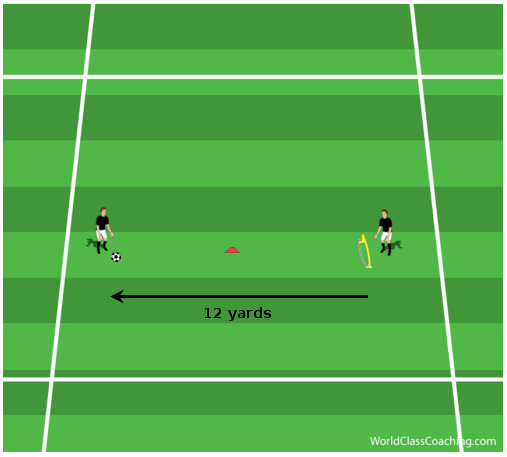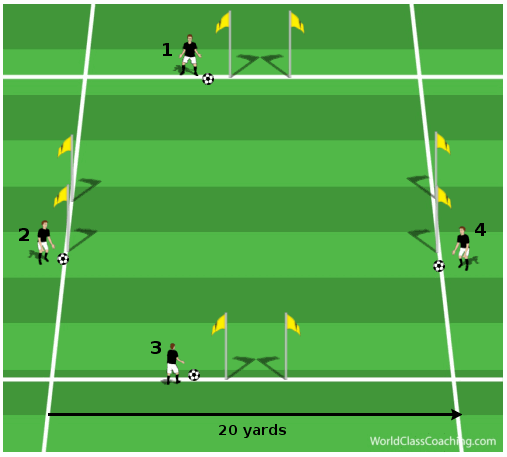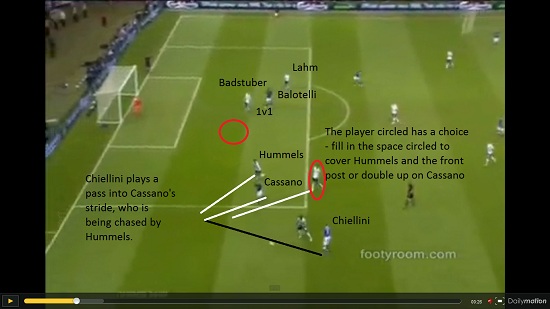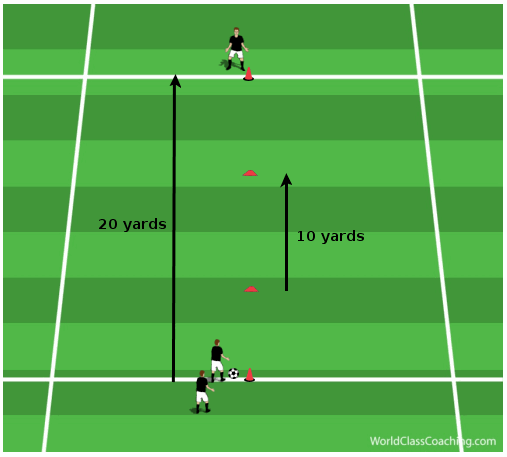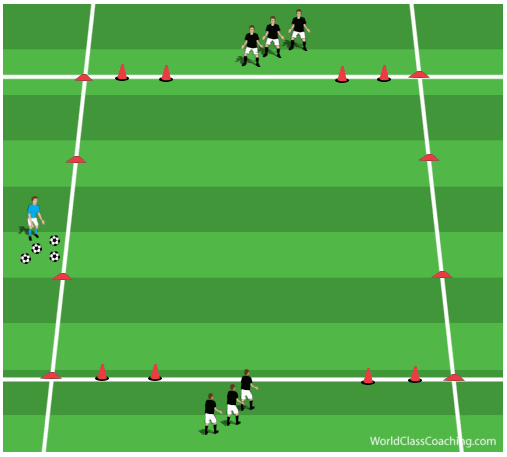Anaerobic Endurance of a Recovering Defender
By Jebreel Bubtana, BRASA, Brazilian Soccer Academy
This week’s exercise is designed to simulate a breakaway with a defender sprinting back to stop the attacker from scoring. This is a great exercise as not only does it work on the anaerobic fitness of the defenders but it is also a situation that the defender is very likely to face at some point during scrimmages or games. It is important to add an incentive for the defender in this exercise as they have to work very hard in this.
Set up and directions:
The attacker starts 40 yards away from goal with a ball and the defender starts 10 yards further back to the left or right of the attacker. You will also need someone in goal. The distances suggested can be modified depending on the ages of the players. For younger players, you can bring the distance in closer to goal and for older players you can push the starting point of the attacker to the halfway line, again with the defender starting 10 yards further back than the attacker (figure 1).
The exercise starts as soon as the attacker touches the ball. This is the cue for the defender to start
Continue reading
